Ducks of all types have amazing qualities and attributes. They are a species of waterfowl that belong to the Anatidae family. These birds are much smaller than swans and geese and are divided among several other subfamilies. As aquatic birds, they enjoy both freshwater to saltwater, and they vary in size, color, and location. Let’s learn some incredible facts about these aquatic birds!
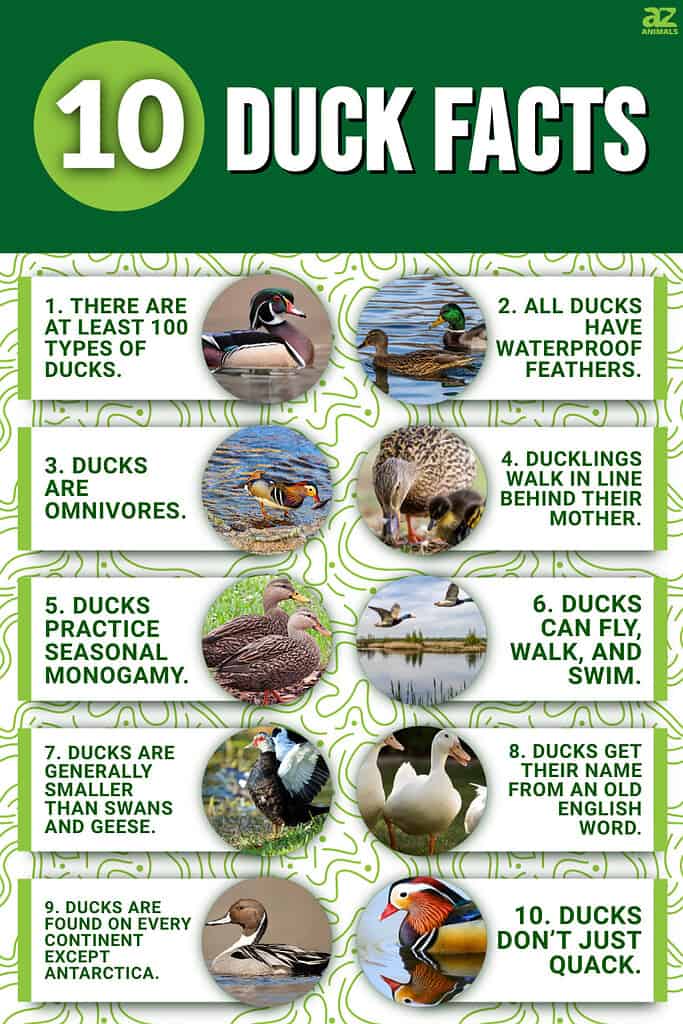
1. There Are at Least 100 Different Types of Ducks
Although geese and swans are not considered ducks, there are still roughly 100 distinct species of ducks in the world. There are 38 distinct species of dabbling ducks, ducks that tend to stick their bottom out in the water when they feed. There are also diving ducks, ducks that dive underneath the water surface in search of food, and there are also ducks that nest inside trees and sit on high branches, known as perching ducks.
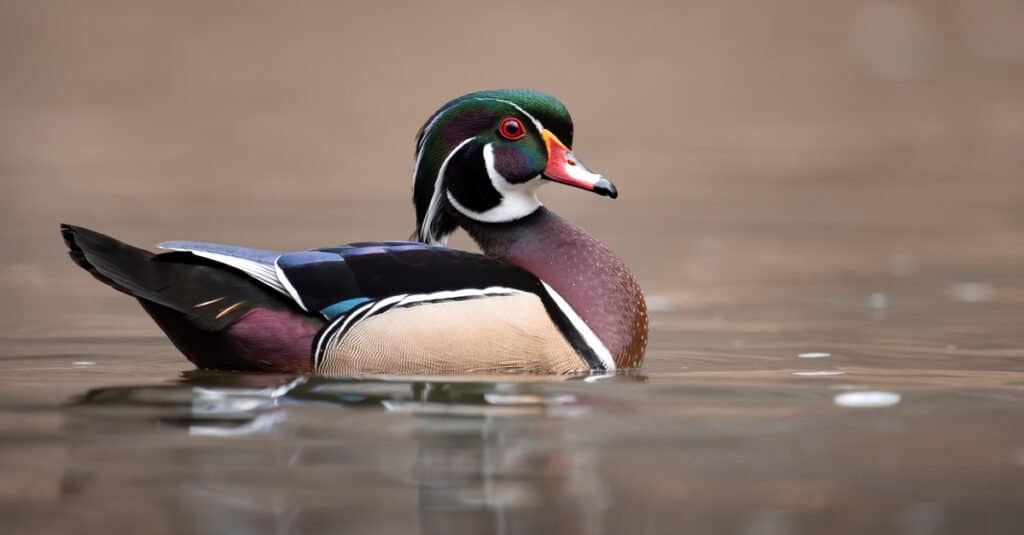
One of the approximately 100 species of ducks is the wood duck, which is a perching duck.
©Harry Collins Photography/Shutterstock.com
2. All Ducks Have Waterproof Feathers
Because these birds are aquatic, they must have the appropriate feathers for wet conditions. In fact, almost all ducks have waterproof feathers, allowing them not to become weighted and immobile when they are in the water. To make their feathers waterproof, they must do something called preening. Preening is when ducks gather a special oil that is produced by the preen gland, a gland located near their tails. Once they gather this oil, they rub it all over their bodies, thus making their feathers waterproof!
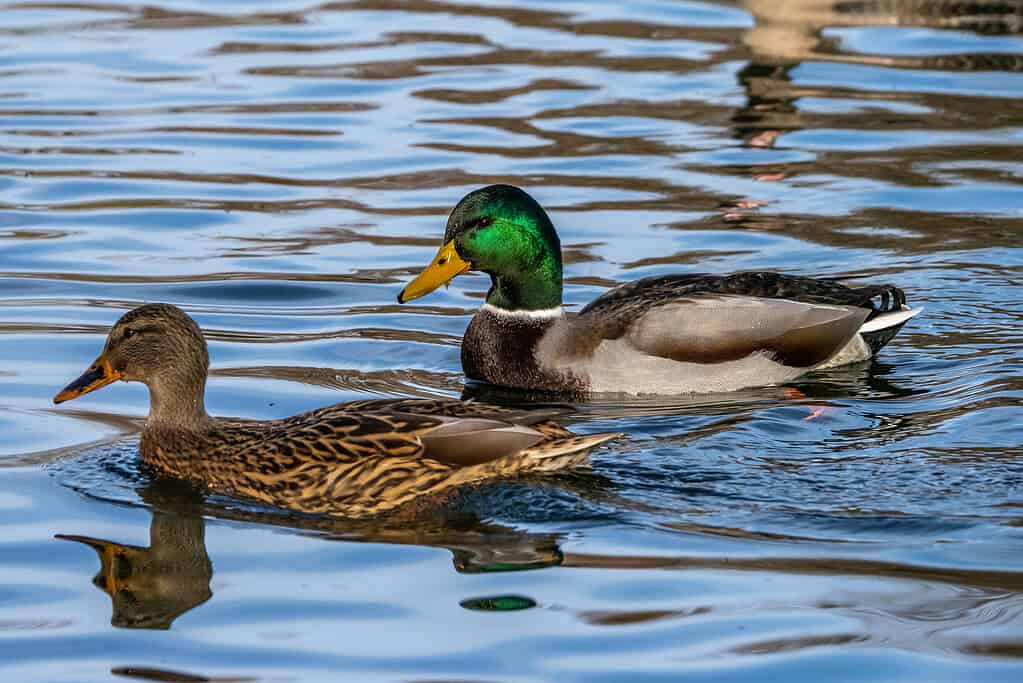
Ducks’ waterproof feathers mean they will not become weighted or immobile when in the water.
©iStock.com/Rudolf Ernst
3. Ducks Are Omnivores
All ducks are omnivores, meaning they eat both plants and other animals. While it is common for ducks to feed on plants, fruits, and vegetables, they also eat smaller animals such as shellfish, amphibians, insects, and invertebrates. They are not fussy eaters and will pretty much eat anything well-tolerated by their digestive system.

Ducks are not fussy eaters and consume plants and small animals such as fish and shellfish.
©iStock.com/Jonas Rönnbro
4. Ducklings Walk in Line Behind Their Mother
This is possibly the cutest duck fact on our list. They call duck families “a row of ducks” for a reason! While most ducks walk in a line as a way of foraging for food, ducklings tend to do this because their mother is the leader and directs them to their food source. This eliminates the need for the mother to leave the nest unattended in search of food for her young. However, ducklings still learn how to hunt and catch food under their mother’s care. After they reach about 1 to 1.5 months of age, they leave their mother and start their lifelong journey without her.
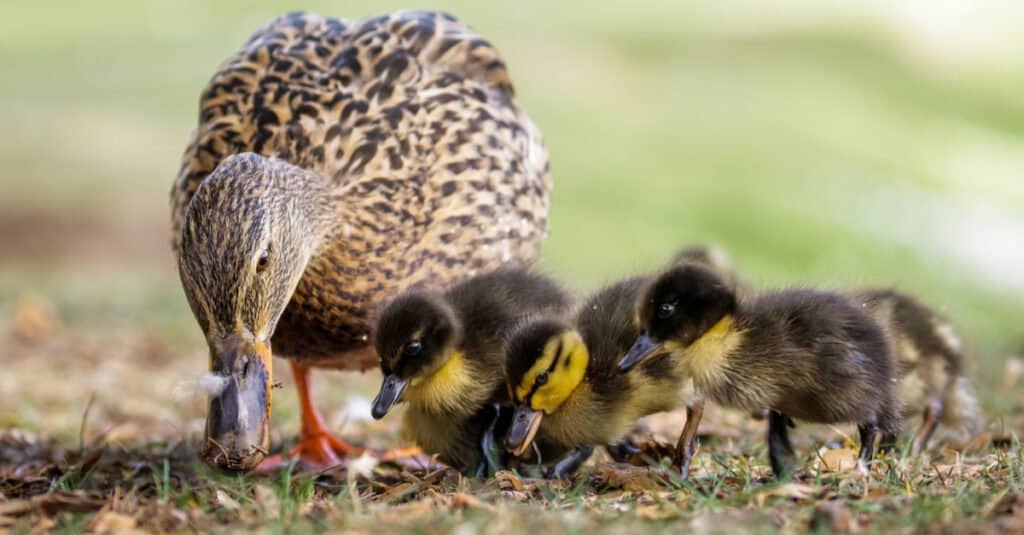
Ducklings follow their mother so she can direct them safely to food sources.
©shaftinaction/Shutterstock.com
5. Most Ducks Are Monogamous
While ducks don’t always mate for life, most of them are monogamous during the mating process. They practice seasonal monogamy, meaning that each mating season, they find a mate and reproduce, as well as form a strong bond with their selected mate during this time. When the season is over, and the eggs are laid, the pair separates, unlike swans and geese, who typically mate for life.

Although ducks don’t always mate for life, they practice seasonal monogamy.
©pablopicasso/Shutterstock.com
6. Ducks Can Fly, Walk, and Swim
Not only are these birds aquatic, but they also walk on land and fly many different distances. Some ducks you may see spend most of their time hunting and sitting on the water, while others can migrate by walking and flying short distances. Most domestic breeds of ducks do not fly. However, there are some species of duck that can fly and glide, but they are not able to maintain flight for an extended period.
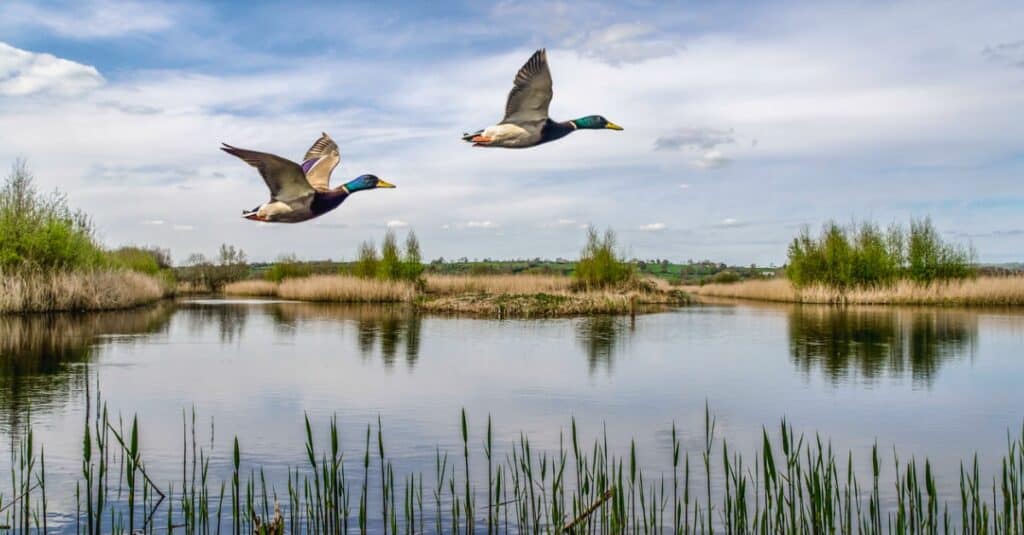
Some ducks can migrate by walking and flying short distances.
©iStock.com/Nathanx1
7. Ducks Are Generally Smaller Than Swans and Geese
Ducks are classified as a distinct species, apart from swans and geese, mostly because of their smaller sizes. In fact, one of the largest species of duck is the Muscovy duck, native to South America. This species of duck can grow up to 30 inches long and can weigh up to 30 pounds, which is still smaller than the common goose or swan. One of the smallest species of duck is the Black East Indian duck, a beautiful, emerald green duck that can weigh a maximum of 1.5 pounds. They are small and incredibly beautiful to look at, with their feathers almost appearing as iridescent at times.
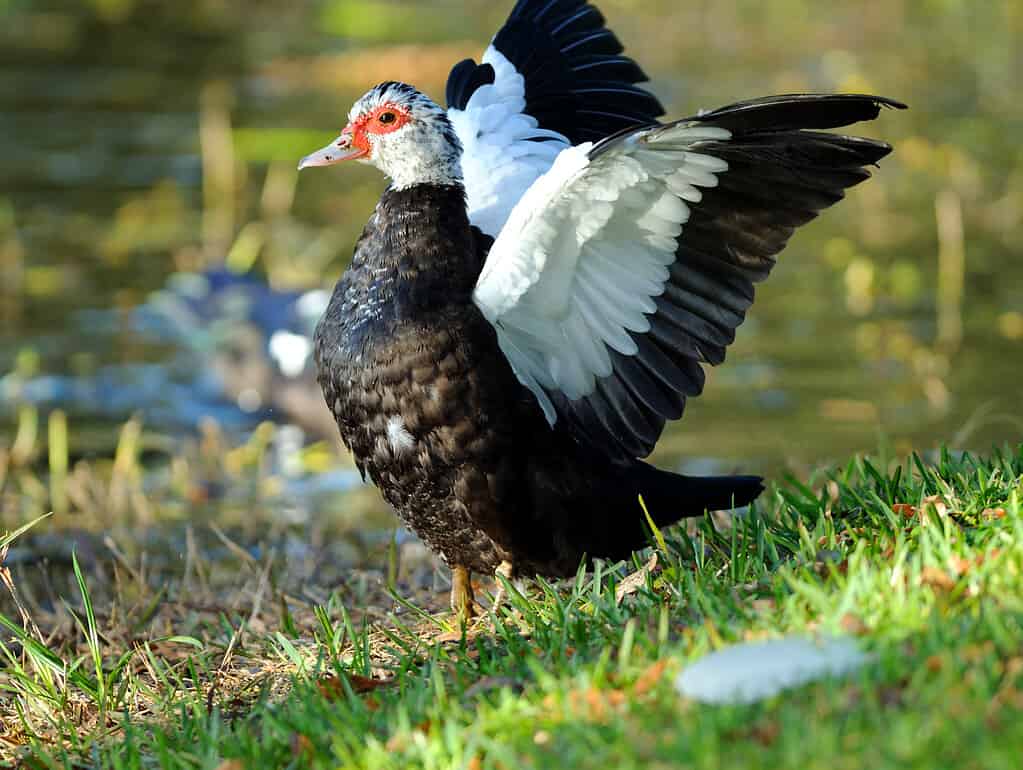
One of the largest species of duck is the Muscovy duck, which can weigh up to 30 pounds.
©Bill Ragan/Shutterstock.com
8. The Word “Duck” Comes From an Old English Word
Ducks got their name from the old English word “ducan,” which means to duck or to dive — something that these birds can do incredibly well. In fact, there are four species of duck that are notorious for being big divers. The Canvasbacks, redheads, scaup, and ring-necked ducks are indigenous to North America and have been known to be some of the best freshwater divers in the entire world! They can dive anywhere from 1-6 feet underwater and last about 10-20 seconds without air. However, this is the only average distance and time. Many of these breeds can dive a lot deeper for a lot longer as well.
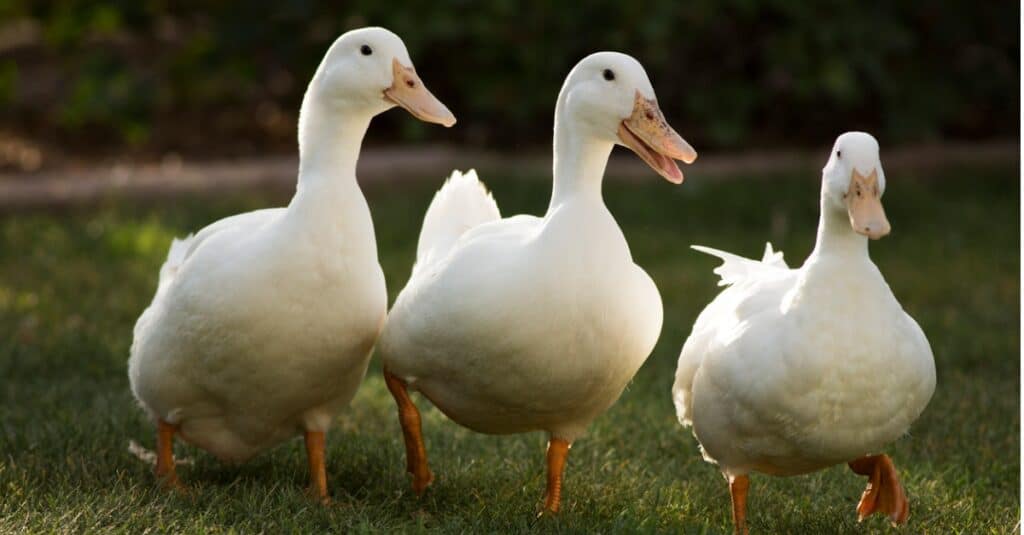
Ducks got their name from the old English word “ducan.”
©iStock.com/Maria Jeffs
9. Ducks Are Found on Every Continent Except Antarctica
Ducks are common birds and can be spotted on pretty much every continent, except for Antarctica. However, there has been one species spotted on the coasts of Antarctica. The yellow-billed pintail, a duck commonly seen in South America, has been known to vacation in Antarctica from time to time. However, it almost always stays on the coastlines and usually does not stay there for a long time due to the harsh and cold climate, as well as the vicious predators such as whales and sea lions.

Ducks are widespread around the world with the exception of Antarctica.
©iStock.com/Irving A Gaffney
10. Ducks Don’t Just Quack
While ducks are most known for quaking, this isn’t the only form of communication that they use. Here’s an interesting duck fact: ducks can use a series of different noises to communicate. They can also produce a series of barks, honks, growls, coos, chatters, and much more. Although they do not sing like most birds, they have also been known to purr at times as well! They can also communicate non-verbally, rustling splashes in the waters with their bills or the leaves and grass with their feet. They truly are a unique and incredible species with a lot of variety!
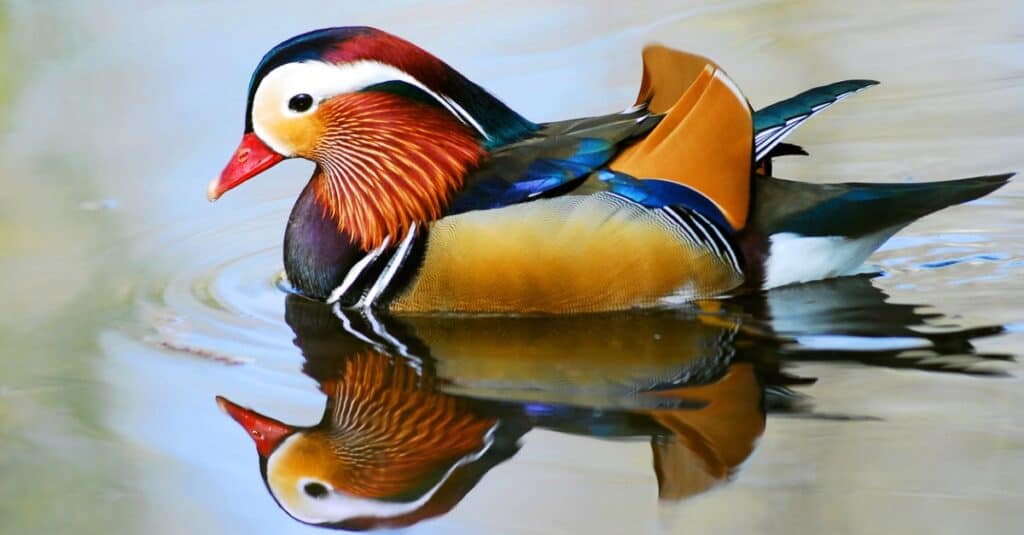
Ducks produce a series of different noises and can communicate non-verbally.
©Christian Musat/Shutterstock.com
The photo featured at the top of this post is © iStock.com/MikeLane45
Thank you for reading! Have some feedback for us? Contact the AZ Animals editorial team.






